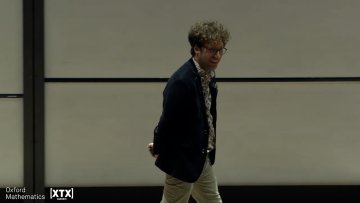Options-driven volatility forecasting
Michael, N
Cucuringu, M
Howison, S
Quantitative Finance
1-28
(17 Feb 2025)
Lower bounds for graph reconstruction with maximal independent set queries
Michel, L
Scott, A
Theoretical Computer Science
volume 1034
115121
(01 Apr 2025)
Active Control of Turbulent Airfoil Flows Using Adjoint-Based Deep Learning
Liu, X
Hickling, T
MacArt, J
(06 Jan 2025)
Dynamics of market making algorithms in dealer markets
Xiong, W
https://www.oliviergueant.com/
Quantifying infectious disease epidemic risks: A practical approach for seasonal pathogens
Kaye, A
Guzzetta, G
Tildesley, M
Thompson, R
PLoS Computational Biology
volume 21
issue 2
(19 Feb 2025)
In this Oxford Mathematics Public Lecture, considered one of the best we have had by our regulars, Hugo Duminil-Copin illustrates how counting can shed light on the behaviour of complex physical systems, while simultaneously revealing the need to sometimes go beyond what numbers tell us in order to unveil all the mysteries of the world around us. You can now watch the lecture on our YouTube Channel via the link below.
Wavefront sets of unipotent representations of reductive p-adic groups II
CIUBOTARU, D
Mason-Brown, L
Okada, E
Journal für die Reine und Angewandte Mathematik
volume 823
191-253
(01 Jun 2025)
High-dimensional subspace expansion using classical shadows
Boyd, G
Koczor, B
Cai, Z
Physical Review A
volume 111
issue 2
022423
(13 Feb 2025)



